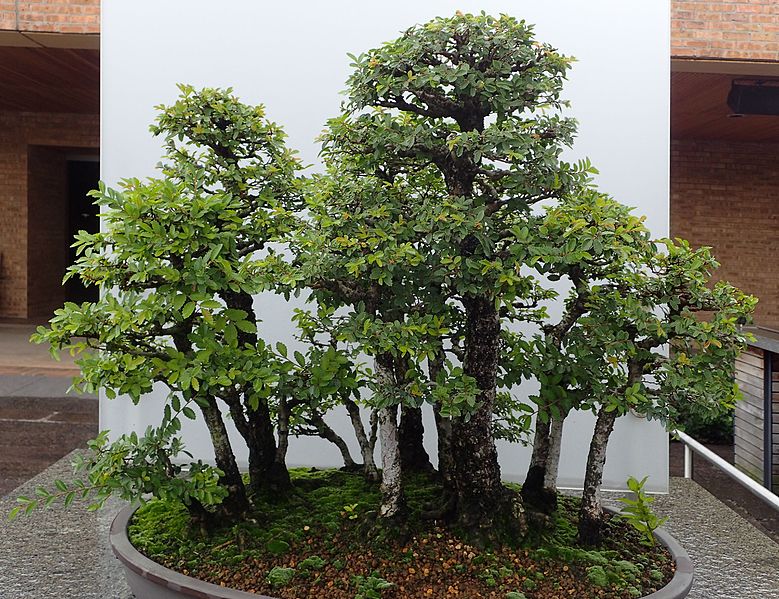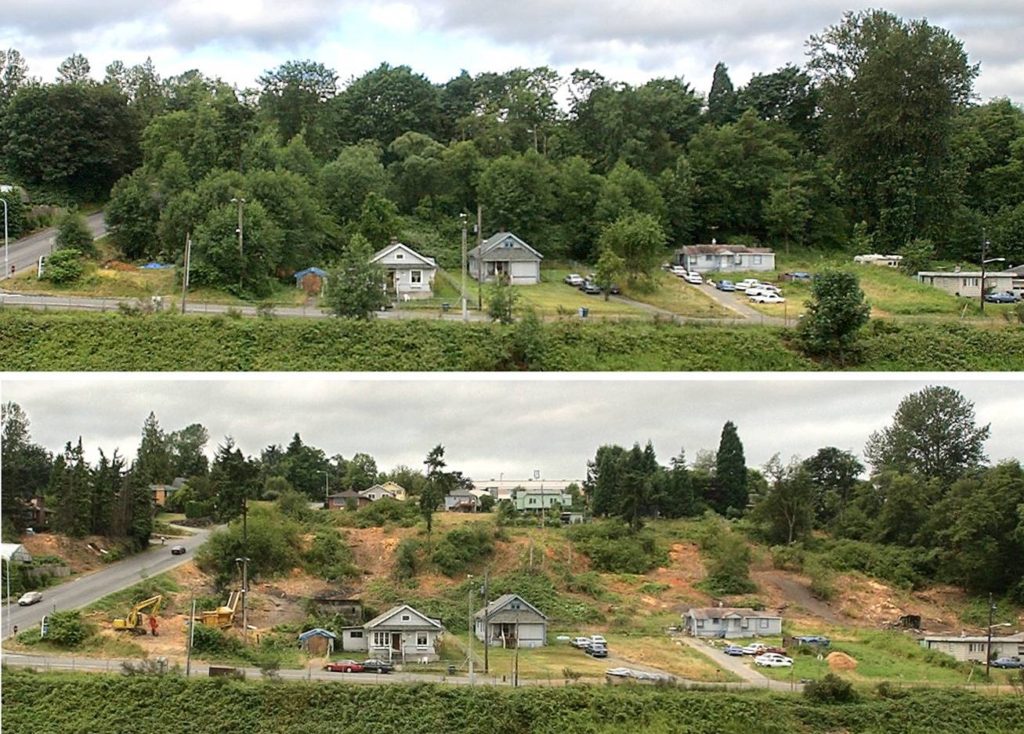
USDA APHIS is seeking public input on a risk assessment that is intended to evaluate the risk of allowing importation of dwarf elm trees (bunjae) from South Korea. Importation of these trees is currently prohibited under APHIS’ authority to require a risk assessment before importation under the NAPPRA program. Upon receiving the Korean request, APHIS must decide whether to maintain the prohibition, or alter it. The risk assessment can be obtained here. Comments are due January 11, 2021.
I urge those with expert knowledge about phytophagous insects, nematodes, and fungal and other pathogens to prepare your own comments to APHIS.
[A year ago, Korea sought permission to export dwarfed maple trees to the U.S. CISP commented on APHIS’ risk assessment at that time; see my blog here. I believe APHIS has not yet decided whether to allow such imports. Many of the same issues apply here.]
After reviewing the risk assessment, I conclude that there are too many high-risk pests to support removing the taxon from the current restrictions. The history of introductions on dwarfed trees in the past supports this conclusion. The most conspicuous is the citrus longhorned beetle (Anoplophora chinensis) – the reason for the original NAPPRA listing – but there have been others, too.
The risk assessment has some strengths. I applaud the assessors for noting in each pest review that since the proposed imports are propagative material, all the pests will arrive on living hosts. The assessment then discusses – briefly! – the mechanisms by which the pest or pathogen could disperse to infest new trees – e.g., flight, rain splash, irrigation water. However, I think the assessment is sometimes too cautious in describing probable invasive risks.
I also find several important weaknesses in both the risk assessment process generally and specific findings.
Weaknesses of the Risk Assessment Process
The assessors do not discuss the potential efficacy of pest-management actions taken by the exporter or by USDA at ports of entry. They outlined production and harvesting practices that they assumed would apply to the exported plants. They warned that the risk assessment finding could not be applied to plants produced or handled other under conditions.
I am troubled by the assessors’ decision not to consider the plants’ ages and sizes. There is evidence that age and size are very important in determining the likelihood of pest presence. Perhaps the decision reflects the assumption that the exported plants would be less than four years old. Still, the assessors should have been transparent about the reasoning behind this decision.
The assessment underestimates “uncertainty”. One manifestation is the decision to provide little information about whether pests or pathogens known to attack several Eurasian species of Ulmus might also attack North American elm species. This gap arises, I believe, from the International Plant Protection Organization (IPPC) and APHIS requirement that risk analysts consider only pest-host relationships described in the literature or inferred from port interception data. I find this narrow approach to be a weakness, given how many unknown pest-host relationships have proved to be highly damaging. This issue arises specifically in the reviews of the nematode Meloinema kerongense and several powdery mildews (Erysiphe kenjiana, E. ulmi and Podosphaera spiralis) – all of which are identified as affecting at least some elm species.
Perhaps the missing information has fewer consequences here, since the NAPPRA process does not require that APHIS prove the pest-host relationship for every pest evaluated in order to justify retaining the prohibition on importation. The well-documented history of detecting the citrus longhorned beetle in artificially dwarfed trees and as a pest of the Ulmus genus provides more than sufficient justification to retain trade restrictions. Still, if APHIS is conducting a formal risk assessment, it should be thorough. Anything else sets an unfortunate precedent.
Finally, in cases when some of the hosts considered are commercial crops – e.g., fruit trees – the assessment often does not include forest trees as economically important resources at risk.
Questions re: some of specific pests in the analysis
3.2.1. Cerambycidae (Coleoptera)
The risk assessment notes the minimal information available regarding several cerambycid beetles present in Korea that are capable of feeding on elm trees. Collectively, these beetles have a wide host range — Acer, Alnus, Citrus, Ficus, Hibiscus, Juglans, Malus, Morus, Quercus, Populus, Prunus, Pyrus, Salix, Sorbus, and Ulmus. The beetles can thrive in the climate present across most of the Lower 48 states (USDA Plant Hardiness Zones 6-9). The risk assessment does mention the risk to urban and forest trees. It also mentions British detection of A. chinensis larvae in twigs of imported maple trees, but for some reason does not mention past U.S. detections and introductions of this beetle in maple bonsai/bunjae trees in Tukwila, Washington. Is this because the detections were 20 years ago? Does the passage of time make the detections any less relevant?

3.2.2. Archips xylosteana (Lepidoptera: Tortricidae)
The analysis of this tortricid moth notes its broad host range, including Abies, Acer, Betula, Fraxinus, Populus, Quercus, Salix, Sorbus, Tilia, and Ulmus. Yet the analysis makes no mention of the potential impact of moth larval feeding on the buds and flowers of forest trees. Nor does it discuss the moth’s impact in Canada, where it is established. The Canadian experience seems quite pertinent and is an obvious omission.
3.2.3. Meloinema kerongens
This nematode is present on elms in Korea. The assessors could find no information on the damage it causes to its hosts there. Again, there is no discussion of possible vulnerability of American elms. Apparently the nematodes are considered likely to survive the importation process, when the trees will be bare root. The assessors say that since the dwarfed trees (once imported) are likely to be planted in pots, that might limit the nematodes’ dispersal into native soil habitats and ability to infect new trees. This finding is troubling because it is likely that nematodes or their eggs could be present in the pots’ soil, and if that soil leaks from the pot or is disposed of during repotting or with other actions, pests could become established in native soil.
3.2.5. Helicobasidium mompa
This fungus causes root rot on multiple genera in 44 plant families. The list of hosts includes Pinus spp., Populus spp., Prunus spp., and Quercus spp. It appears to thrive in a wide climatic range covering virtually the entire Lower 48 states (USDA Plant Hardiness Zones 2-11). The fungus is spread via rain or irrigation water. I note that experience with the Phytophthora genus of brown algae has demonstrated how difficult it can be to control pathogens that spread in rain or irrigation water – in both nurseries and the wild.
Other Potential Pests
I urge experts to review the long list of pests not analyzed—especially the nematodes that inhabit the root and rhizosphere. Analysts did not analyze them because they are ectoparasites; they decided that ectoparasites were unlikely to remain with the dwarfed trees when they are shipped bare-root.
I also wonder whether the mistletoe Viscum album – a parasitic plant – might be spread onto the dwarfed trees by birds perching on branches or shelter structures above the production facilities. Assessors thought that dormant mistletoe on the plants would not be easily detected during visual inspection at the ports.
Posted by Faith Campbell
We welcome comments that supplement or correct factual information, suggest new approaches, or promote thoughtful consideration. We post comments that disagree with us — but not those we judge to be not civil or inflammatory.
For a detailed discussion of the policies and practices that have allowed these pests to enter and spread – and that do not promote effective restoration strategies – review the Fading Forests report at http://treeimprovement.utk.edu/FadingForests.htm